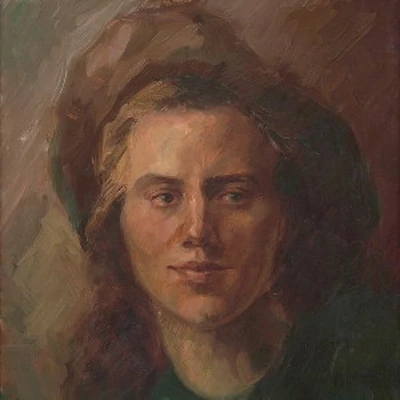Mária Medvecká
The unchanging world of Orava




Artwork of the modern era is inextricable from the artist. In the west, artwork is expected to be an expression of the artist’s personal history, their introspection and interpretation of the world—their ego. It’s an expectation that must be dropped when looking at the work of Mária Medvecká.
Mária Medvecká painted the people and landscape of Orava, a rural region in northern Slovakia for more than 45 years. She began in 1940, just after the start of World War 2 and painted until 1986, the year Pixar was founded. It isn't an exaggeration to say that these years saw more change than the last millennia of human history combined, from the invention of the atomic bomb to development of international space programs, to the first steps towards the world wide web. But Orava, through the eyes of Medvecká, never changed.
On the brilliant Webumenia.sk, a site documenting Slovak artists and galleries, you can scroll through more than 500 paintings and drawings by Medvecká, and it’s worth doing so to appreciate the weight of her body of work. Her palette never strays from ruddy browns, murky greens and creams. Her brushwork is heavy and expressionistic, her canvases small. But the repetition that defines Medvecká’s work is found in her subject matter: the Orava landscape and people.
The fields and hills of Orava are almost treeless and only rarely green. They are blasted landscapes, scrubbed of all but the occasional hardy farmer, bent double tending to rows of potatoes. The skies are flattened and dark, and stripes of red earth cleave Medvecká’s world feeling ominous and alien, as if these quiet scenes are set on mars.
And Mária’s portraits match the landscape. Expressionless women are scarved and blanketed against the cold, as swaddled as the babies they carry. Children pose with kites and stray chickens, their faces implacable. She rarely paints men, and when they appear they often wear welding masks or the jumpsuits typical of factory work. They look strong and distant.
After the war, Slovakia was reconstituted as Czechoslovakia, and came under the influence of the Soviet Union. During this time Medvecká dedicated herself to completing her artistic training, traveling to study at the Academy of Fine Arts in Vienna, the Academy of Fine Arts in Prague and the Academy of Fine Arts and Design in Bratislava.
On completing her studies, Medvecká returned to Slovakia, where she married the academic painter Ctibor Belan and settled into her role as the painter of Orava. From 1950 on, Medvecká’s work absorbed some of the flavor of socialist realism, but while this ‘official style’ of the Soviet Union typically glorified its proletariat subjects in heroic monuments and optimistic propaganda, Medvecká’s ideal world is much much quieter. In Orava, heroism is found in strong, silent mothers, independent children, hard-working fathers, and the endless red hills of the uncompromising earth.
...
Got questions, comments or corrections about Mária Medvecká? Join the conversation in our Discord, and if you enjoy content like this, consider becoming a member for exclusive essays, downloadables, and discounts in the Obelisk Store.